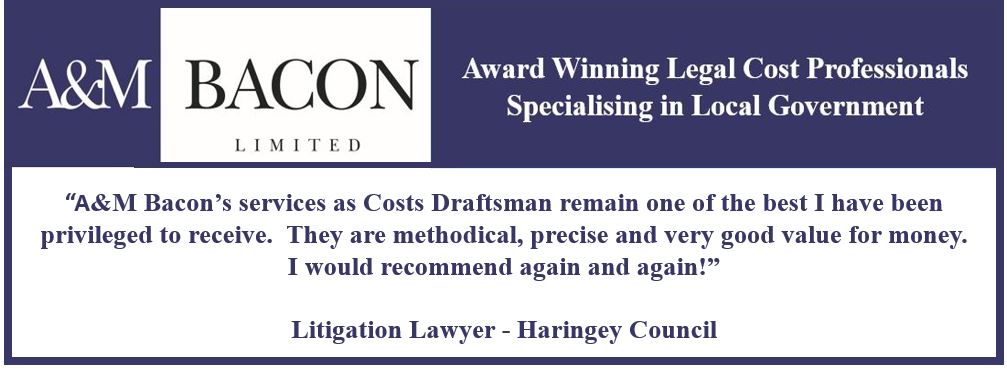Wide appeal
It has been a busy year for the Court of Appeal when it comes to hearing planning and environmental disputes. Christiaan Zwart and Zack Simons round up some recent cases.
Veolia ES Nottinghamshire Ltd v Nottinghamshire CC [2010] EWCA Civ 240
The inspection rights of “persons interested” and section 15(1) of the Audit Commission Act 1998 were considered where a party applied to inspect commercial confidential material in a waste management PFI contract between Veolia and Nottinghamshire CC. Protecting private information is a fact-specific question balancing public and private interests. Article 1 of the first protocol (and perhaps Article 8) ECHR allowed section 15(1) to be read down to except confidential information, subject to justification. Here, the council had failed to justify further interference with Veolia’s confidentiality.
The key point is that decisions to disclose confidential material under s.15(1) require some justification showing the necessary balance.
R (Dry) v West Oxfordshire DC [2010] EWCA Civ 114
The Court of Appeal looked at changes in circumstances between report and decision. By way of summary, when the planning application was made, most of the site was classified by the Environment Agency as Zone 1 (low flood risk). Between the LA resolution to grant permission and the notice of permission, the EA published a map amending most of the site as Zone 2 (moderate risk).
The Court held that the Kides requirement that authorities review new and material factors arising between resolution and permission was to be applied with common sense on a fact sensitive basis. Here, the LA and the EA had accepted the site as Zone 2 for the sequential report before the resolution and subsequent re-classification would not have made any difference.
The key point to note is that new material means new material.
R (Friends of Hethel Limited) v South Norfolk Council [2010] EWCA Civ 894
The Court of Appeal overturned the High Court and quashed the grant of planning permission for three wind turbines at the Lotus car factory in Hethel on two grounds:
The Council’s constitution provided that if an area planning committee disagreed with officer advice then the application would be referred to the district wide planning committee unless two-thirds of the membership of the area committee voted against the officer view. The area planning committee had voted 5-3 to reject the scheme, against officer advice. The application was therefore referred to the main committee who approved the scheme 8-7. The Court of Appeal held that this constitutional provision offended the requirements of the Local Government Act 1972, Schedule 12 paragraphs 39 and 44 that decisions of council committees should be taken by a simple majority of those present and voting. The application therefore returns to the Council's area planning committee.
The Environmental Statement had identified impacts on the setting of listed buildings. Additionally the Council’s officers had identified an impact on a Grade I Church. The Council failed to consult English Heritage as required by Circular 01/01 and the Planning (Listed Buildings and Conservation Area) Regulations 1990.
The key points are to consider carefully the rules in the Local Government Act governing procedure at council meetings and, to ensure that the correct consultees are notified of the application.
R (Birch) v Barnsley MBC EWCA Civ 1180
The authority’s screening opinion for a composting facility concluded that, due to its nature and size, the application did not fall within Sch. 2, Town and Country Planning (Environmental Impact Assessment) (England and Wales) Regulations 1999, so no EIA was required. In the Court of Appeal, the council conceded that the development was within Sch. 2, but that the error had no consequence because its officers had carried out a full screening opinion. However, as well as the technical breach, the opinion had failed to consider the cumulative impact of spreading of composted materials in breach of Sch.3, para 1(b), and the opinion was quashed.
Thus, planning conditions are insufficient to remedy a defective screening opinion.
R (Siraj) v Kirklees MBC, CA, unreported, 21.10.10
What constitutes a sufficiency of reasons was considered where a planning inspector ’s report recommended granting permission for an agricultural machinery workshop in the green belt to the LA’s planning sub-committee. The committee granted permission, and summarised the reasoning in the inspector ’s report as required by article 22, Town and Country Planning (General Development Procedure) Order 1995. Where a local authority agreed with a planning inspector’s decision, reasons may be brief whilst if it disagreed fuller reasons would be expected: Long [2006] EWHC 1604 (Admin).
It is therefore important to note that the sufficiency of reasons required in a LA summary is not to be equated with those of a planning inspector’s decision.
Calderdale MBC v SoS for Communities and Local Government, CA, unreported, 13.10.10
The appeal concerned planning presumptions and section 38(6) of the Planning and Compulsory Purchase Act 2004. In granting an application to construct residential dwellings on a greenfield site, the inspector stated that s.38(6) required him to have regard to the applicable local development plan, which contained a policy that prohibited development in unallocated greenfield land. That was an error of law: where a development plan contained such an unqualified prohibition, s.38(6) raised a presumption in favour of that prohibition which could only be displaced by material consideration that indicated otherwise.
Development plans are not mere relevant considerations. s.38(6) creates a presumption in favour of following development plans absent material considerations to the contrary.
Christiaan Zwart and Jack Simons are barristers at 39 Essex Street (www.39essex.com).



